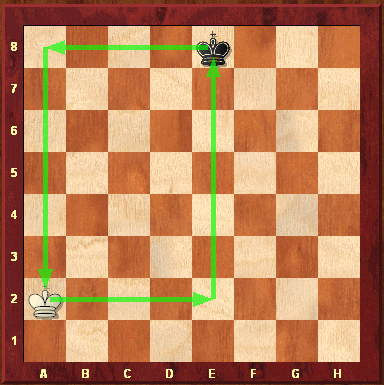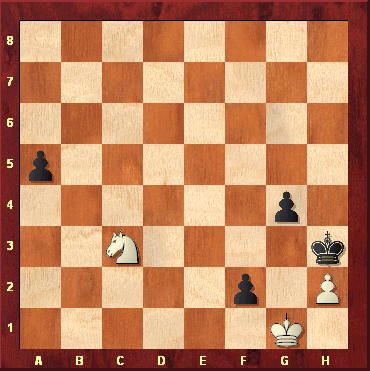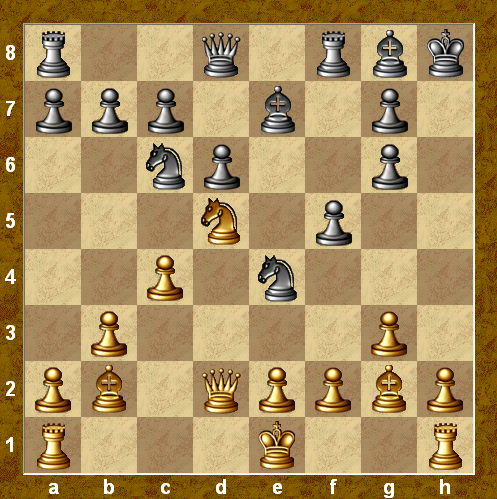Today is the first entry of my online training notebook, I’m still trying to figure out how I will work this out, but I plan on adding an entry with the salient topics that I covered as well as personal progress and benchmark data.
I also plan on adding a downloadable ChessBase file which will contain additional positions, games and notes.
Study Endgames
Reviewed pages 57-88 in Silman’s Endgame Course. This chapter dealt with distant opposition as well as basic K+P vs. K endings.
Below are a few keypoints from the chapter:
Opposition without a direct connection
In the diagram below notice that the corners of the rectangle have the same colored squares, in this case White has the opposition, since he is 5 (odd number) of squares away from the Black King. You can determine the opposition of two King’s without a direct connection by creating an imaginary rectangle with intersecting same colored squares.

Questions to ask in a K+P vs. K endgame:
- Is the pawn a rook pawn? (then more than likely the game will be drawn)
- Is the stronger side’s King one square or two squares in front of it’s pawn? (One square and it depends on who has the opposition, two squares is a win for the stronger side.)
- Who possess the opposition?
Endgame Puzzle

White to move. Is White lost?
Study Tactics
Did questions from the 3rd stage of studies (Queen Checkmates) #419 -442 (23) for 30 minutes with an 84% success rate.

This is a simple puzzle, but I notice that tactics that involve pinned pawns give me difficulty. Highlight for answer [1.Qh6+ Bh7 2.Qxg7#]
Scratch my previous comment. I just re-read my post, and the point of the position I showed was that black having the opposition doesn’t help.
I have yet to see a K and 1P vs K in which this misaligned opposition helps the defender. Likeforests showed an example in which it helps with 2P versus 1P. But one crappy thing about Silman’s treatment is that he shows ZERO examples in which it is used! He just defines it. That is true of all my endgame books.
Still confused, but rereading that post and the comments actually is helping a little (except with the questions in this post).
Interesting endgame puzzle. I would say drawn due to 1.Kxf2 Kxh2 2.Ke1 g3 3.Ne2 g2. All these moves are relatively forcing. The king is in the square of the a-pawn and the knight blocks the g-pawn. Also, the knight is hard to approach and has several retreat squares.
In K P vs K endings, one more question to ask is whether the king has reached the sixth rank–then the rules tend to change.